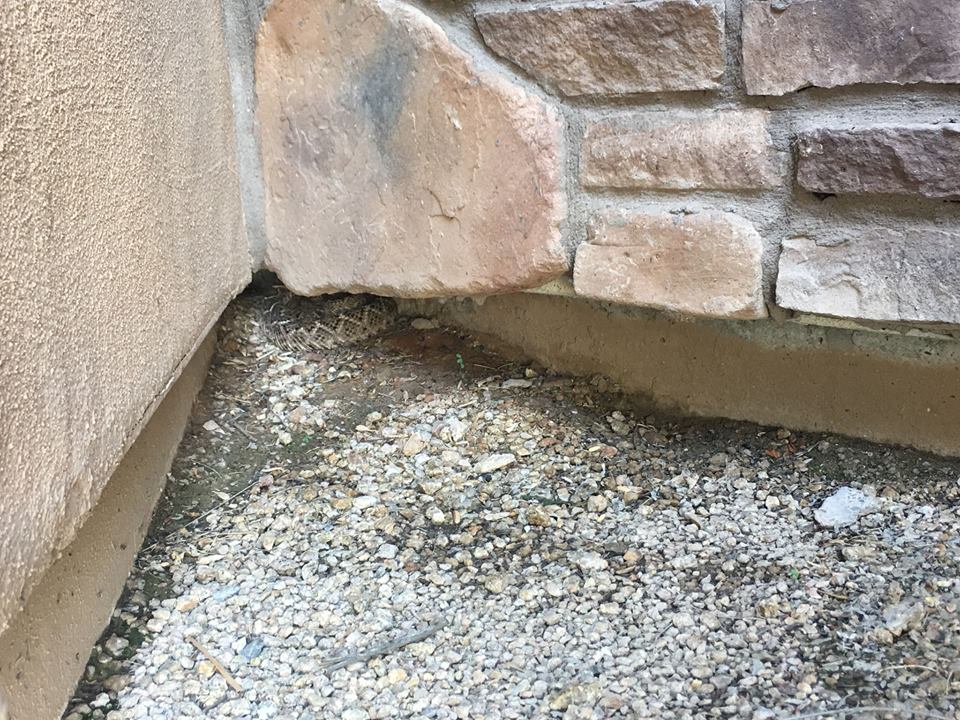Immediately after a heavy rain, like the one that swept through the valley last night, we often receive an increased number of snake removal calls.
Rattlesnakes often use holes in dry washes and drainage systems to hide from the intense, dry heat of the early Summer. When the rain suddenly appears, those that have not yet left their hiding spots are sometimes caught in the rising waters and end up in odd places. Sometimes, the rain is just enough to make their chosen hiding spot undesirable, and they’re forced to move on. That means they sometimes head for the nearest available cover as the day heats up: alongside homes and buildings with suitable overhangs to protect from the sun.
Be extra aware if you live next to a wash, drainage area, or other places that are dramatically affected by the rain. If you live on the edge of the desert and have sections of your property that have flooded, especially areas with full cover like sheds and decorative rock features, you should also be cautious.
This is all normal, and temporary, and just one more thing to keep in mind as we all go out to pick up fallen palm fronds and survey any damage to our homes from the storm.
Does the rain mean that there are more rattlesnakes than normal?
Nope. Rattlesnakes don’t spontaneously appear from the dirt when touched by rain. While higher average rainfall can, over a period of years, lead to a higher survival rate of young rattlesnakes, and help keep the adults already here well-fed and alive, more rain doesn’t mean more snakes. It may bring cooler temperatures and more suitable conditions for snake activity … and human activity, so there may be an increase of encounters. The idea that a season of heavy rain means more large rattlesnakes will be out there is false.

